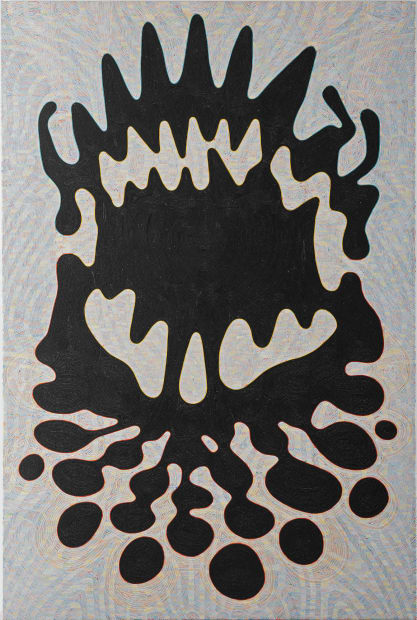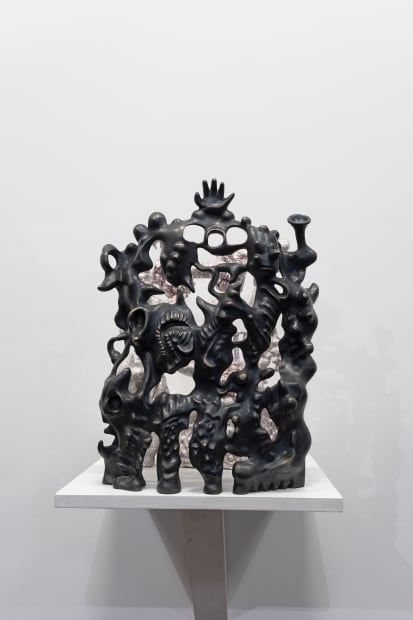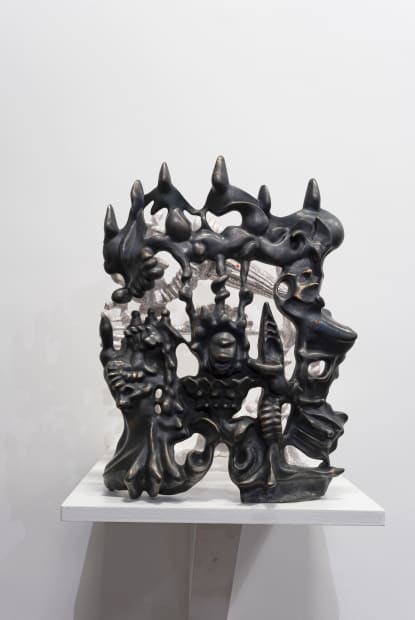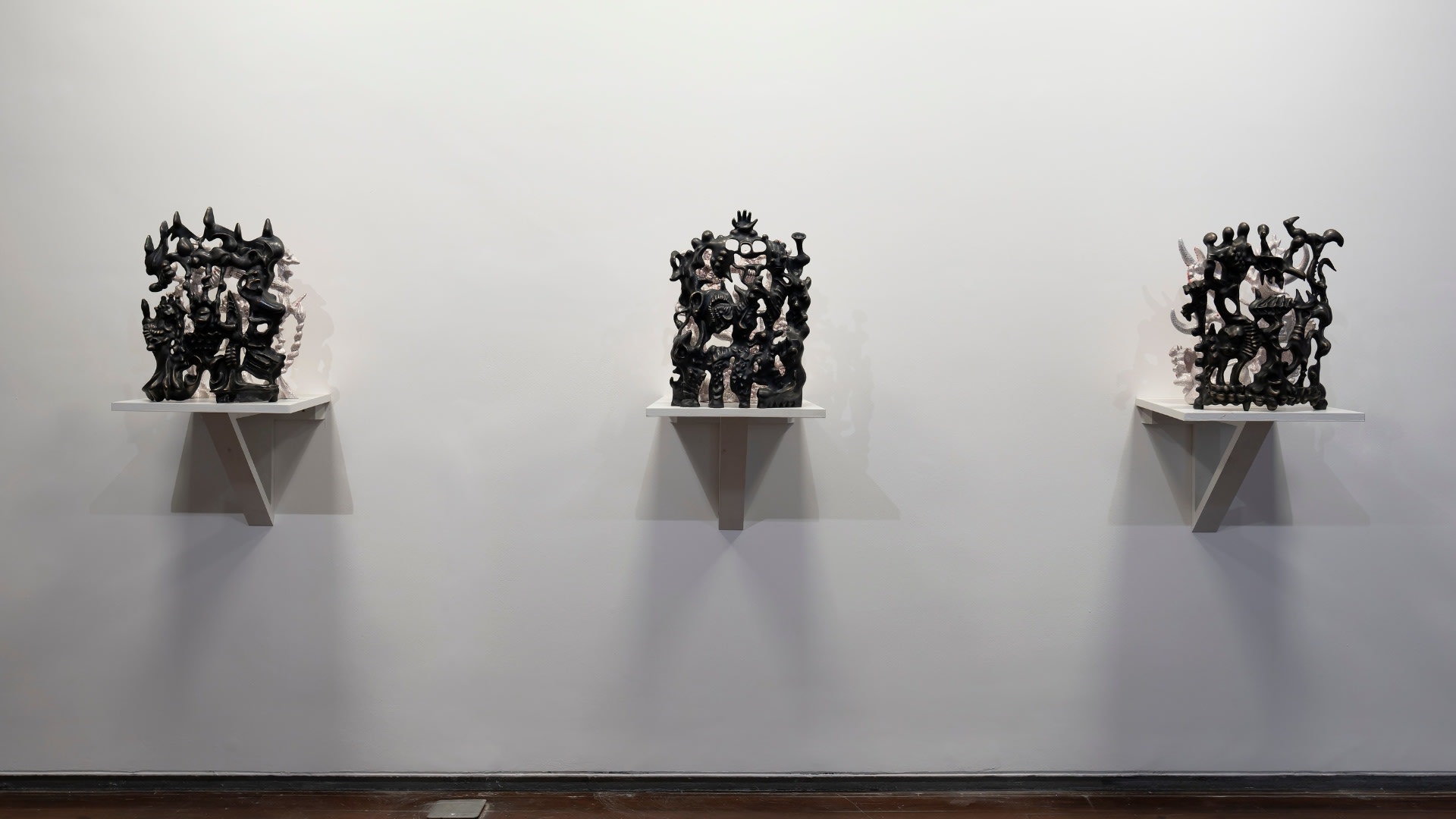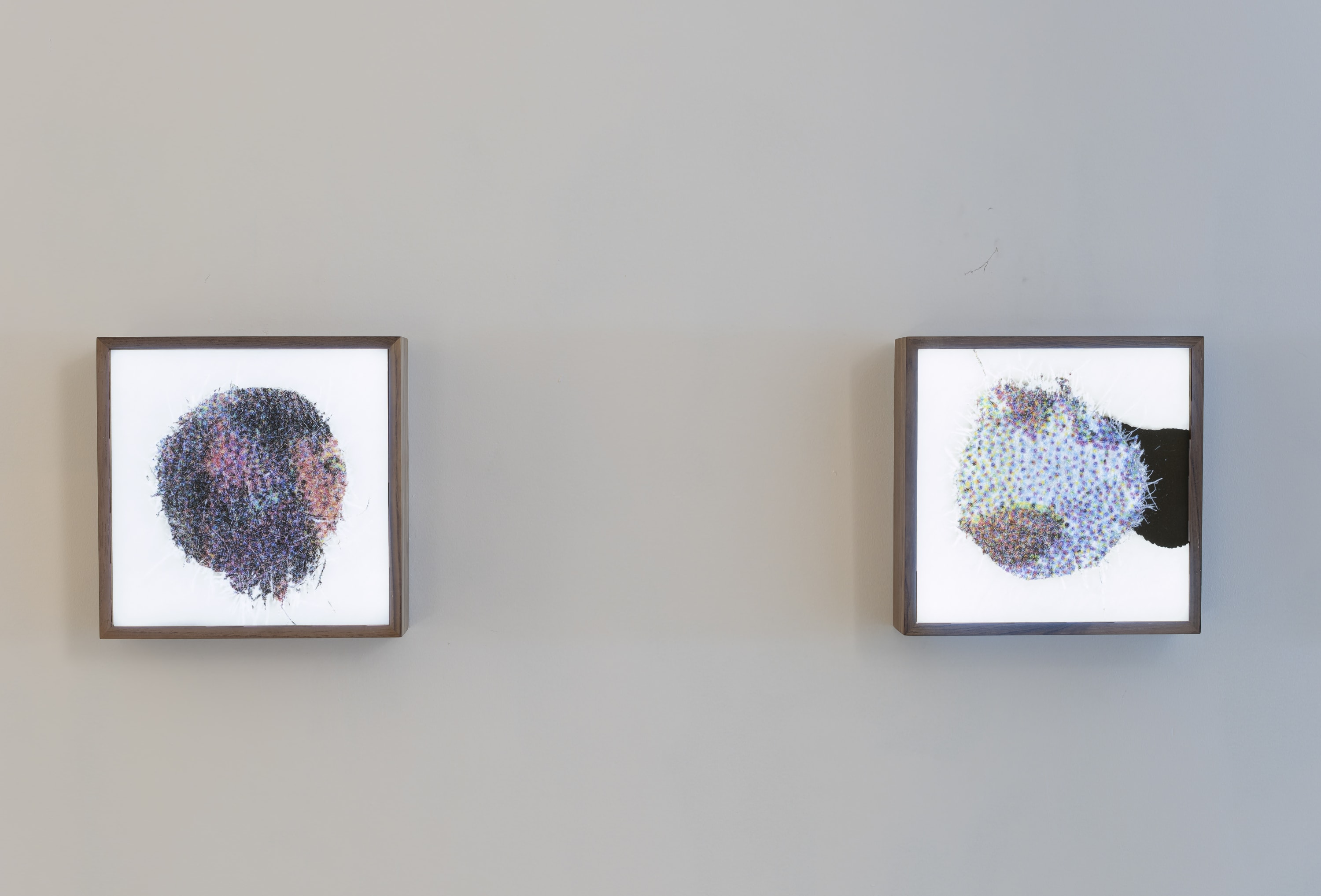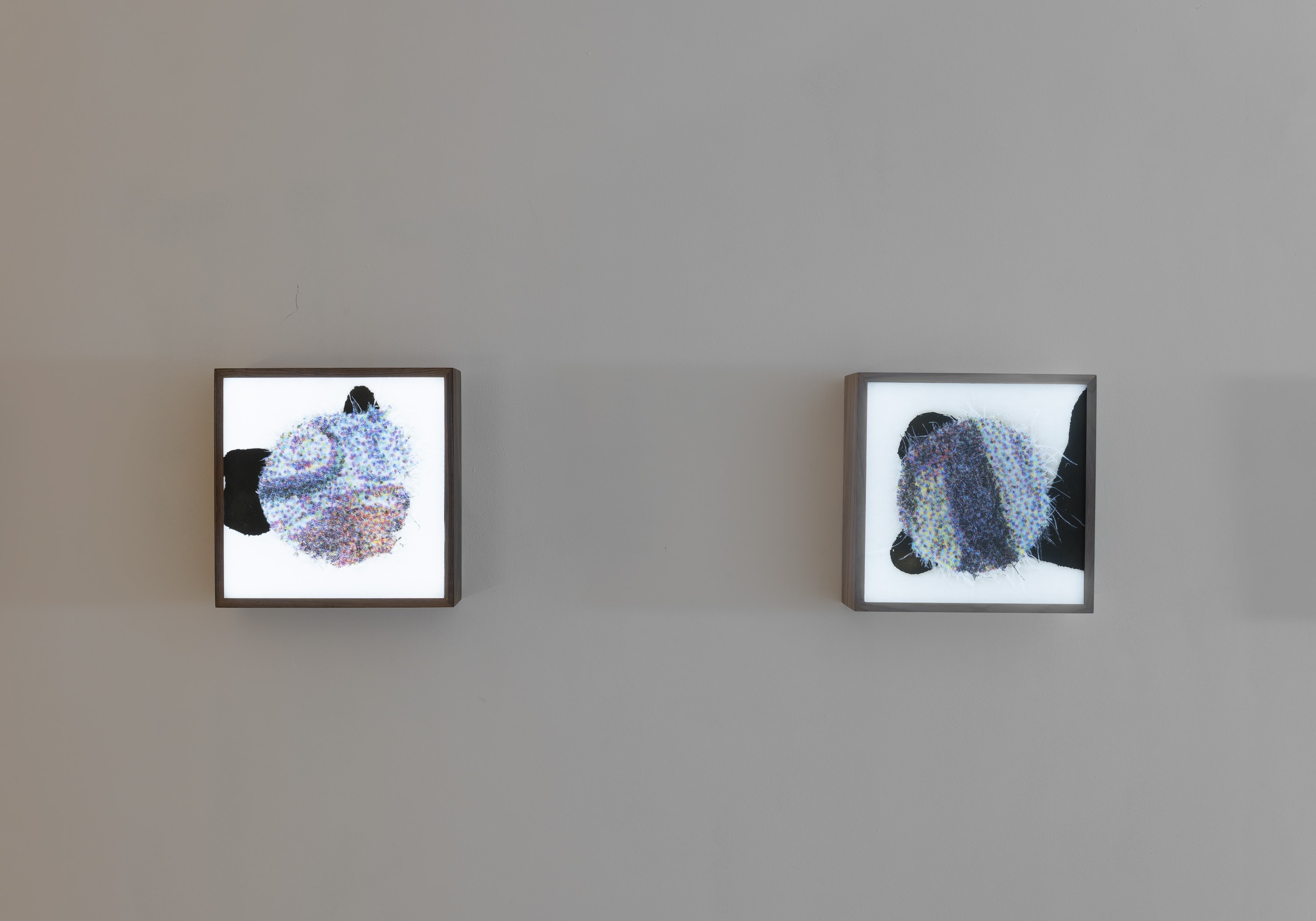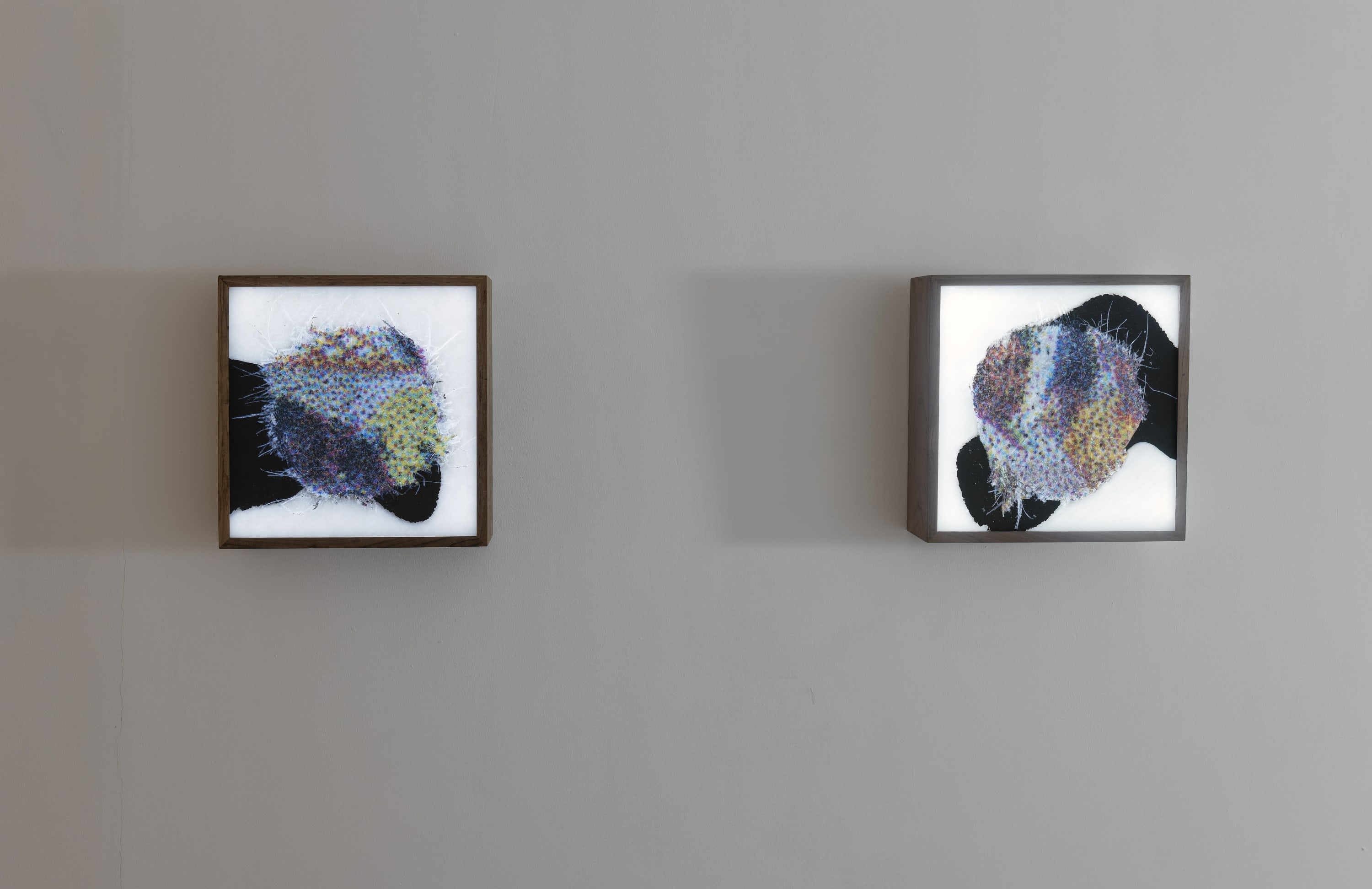-
Raised Eyebrow
Anant Joshi -
Anant Joshi invents a circus of the past: forms that populate his work act out stories of political upheaval and social turmoil in the country. He plunges us into this troubled world with the satire of a semi-cartoonist, semi-toymaker, and artist. Inhabiting multi-coloured interiors and boxed in by the edges of the canvas, Joshi’s figures reference found photographs, newspaper clippings and cartoons. His protagonists appear faceless, ghoul-like creatures, that dissolve into their psychedelic surroundings. The artist is reluctant to entirely reveal its intricacies repeatedly veiling his work using techniques of masking and camouflage that often divert the viewer.
He creates a surface alive with webs, intersected networks, and hidden beams of incredible colour, only to be disrupted by black dematerialised forms in their very centre; shifting our focus from the primary subject. Yet, a multitude of figures emerge from the layers, where forms forge to reveal themselves.
Tactical distractions, misinformation, and political strategies are natural subjects to him, and come to the fore again. Here a sense of history and longing is seen through the contemporary gaze.
-
-
-
-
The original statue that remained with Gandhi through his life – sited as an example to his million followers of “see no evil, hear no evil, speak no evil” (but now gone missing) – has in fact become an ode to our times with its replicas floating in and around the various Gandhi ashrams. Making a parallel of Gandhi’s lost monkeys, Joshi’s sculpture titled ‘Missing - Flowers of the Wilderness’ is a beautifully crafted bronze version, veiled behind a more colourful counterpart made in fibreglass – creating his own story of the missing monkeys.
-

-
-
In the press
"Art becomes a catalyst for social change, a medium through which the artist communicates not only the complexities of political history but also a vision for a more
enlightened and informed society."
- Sonal Motla, Free Press JournalFree Press Journal The Art Newspaper Condé Nast Traveller Art Asia Pacific Times of India The Indian Express
-
 Anant Joshi
Anant Joshi


